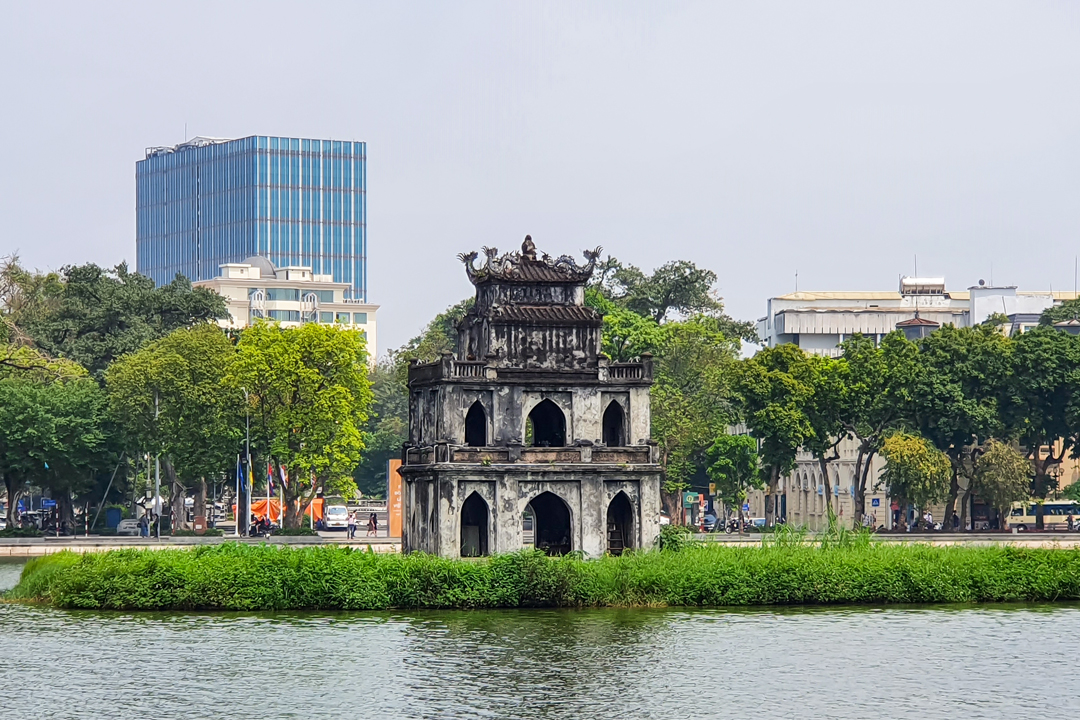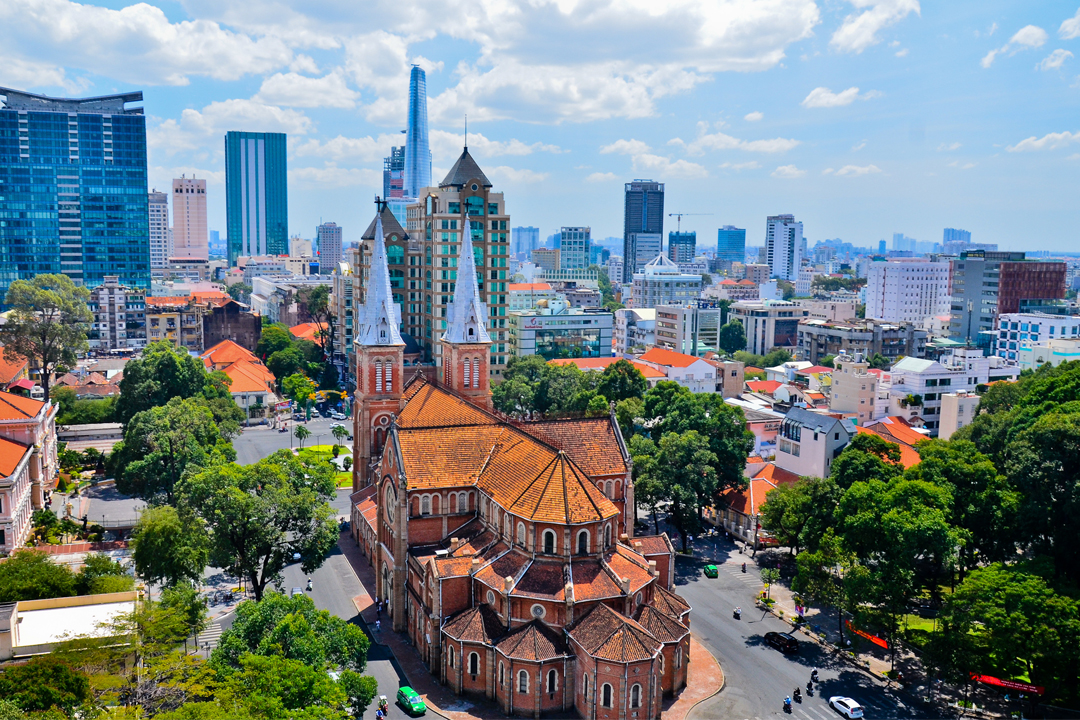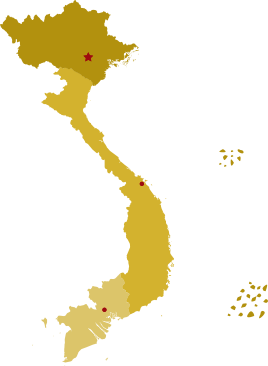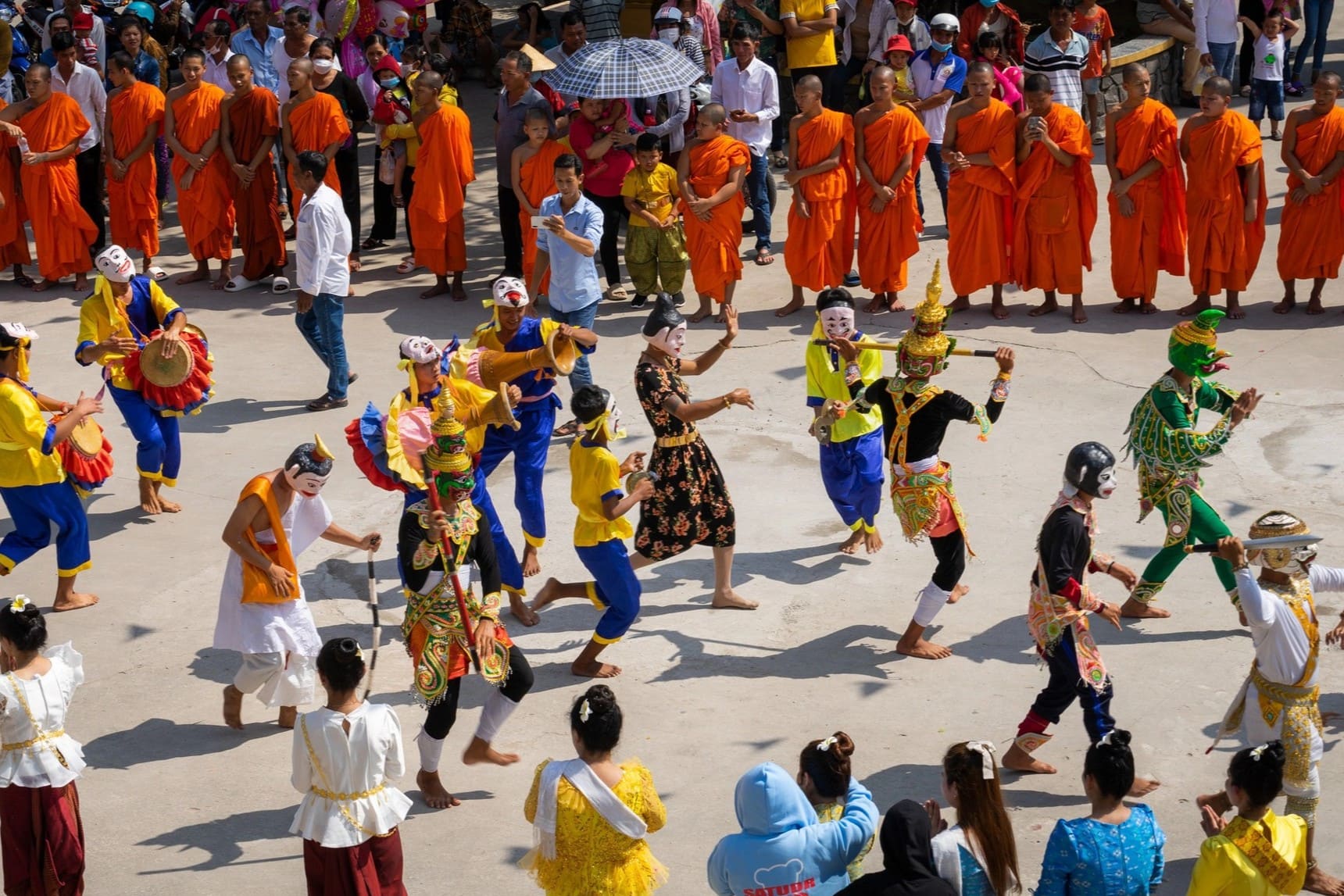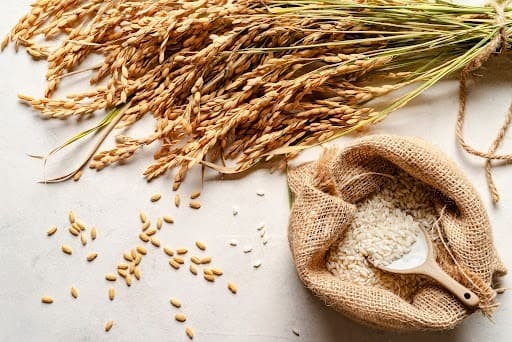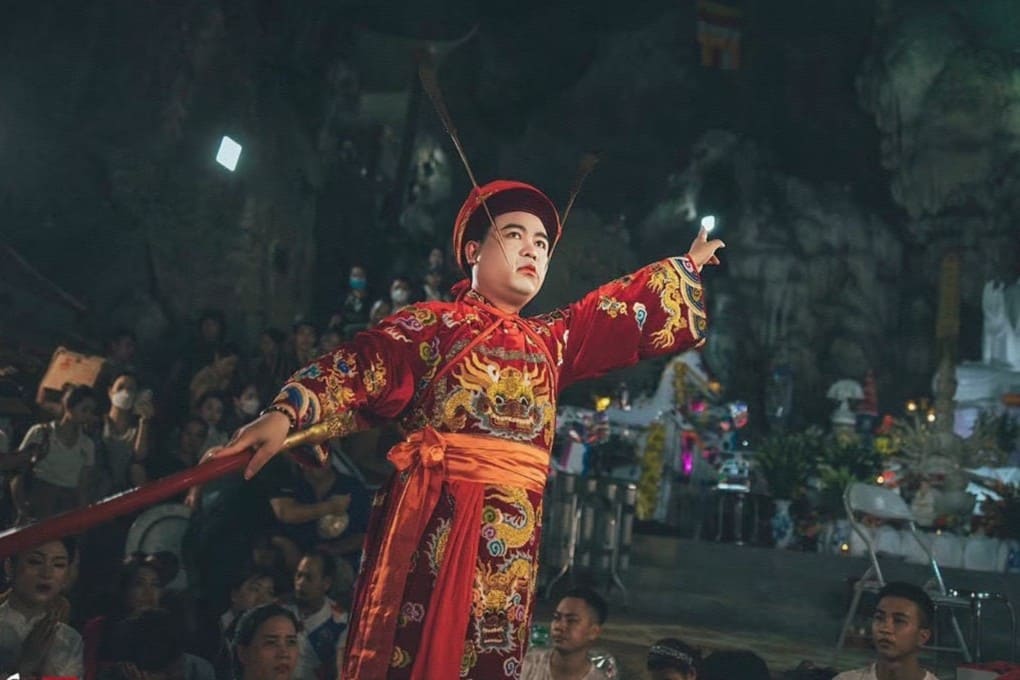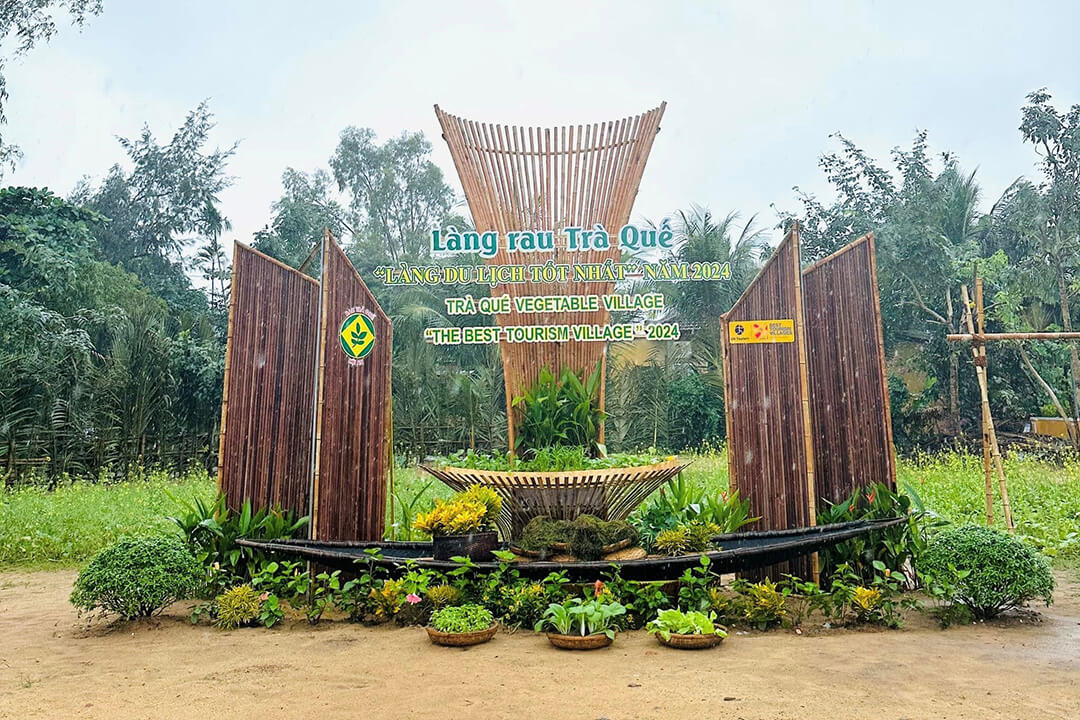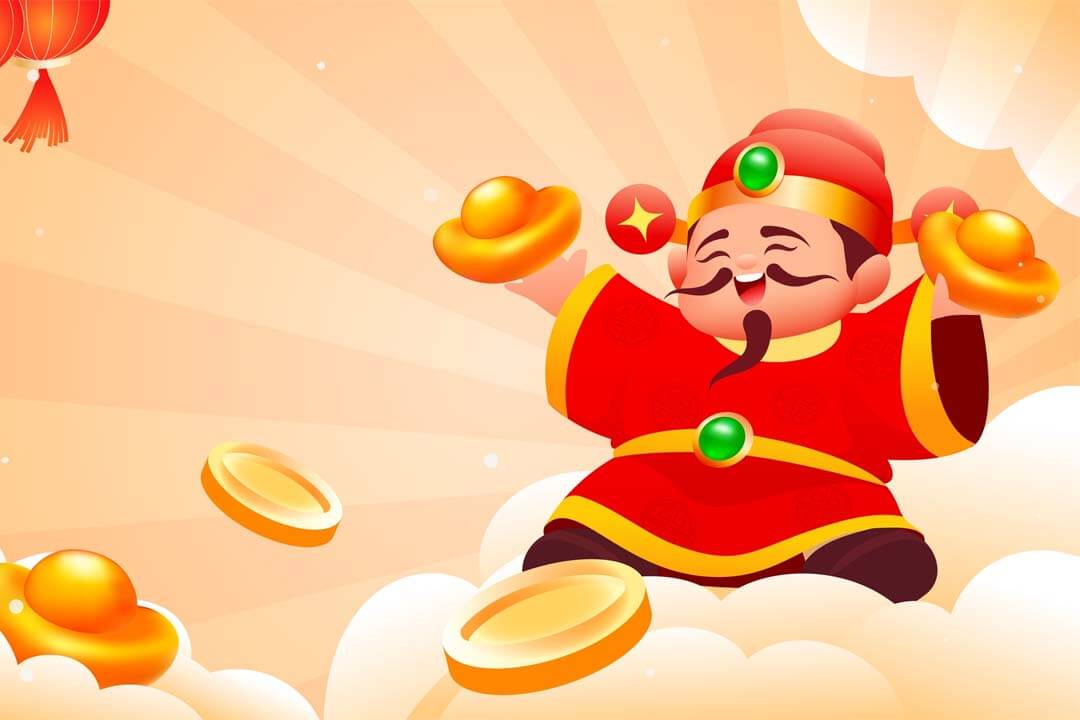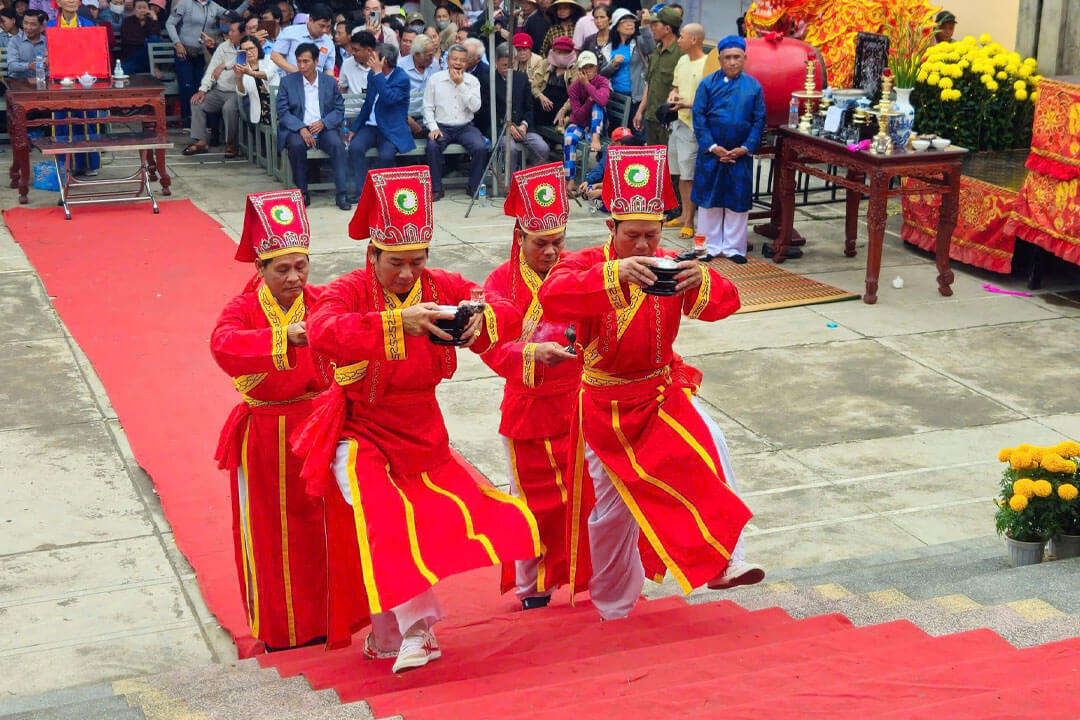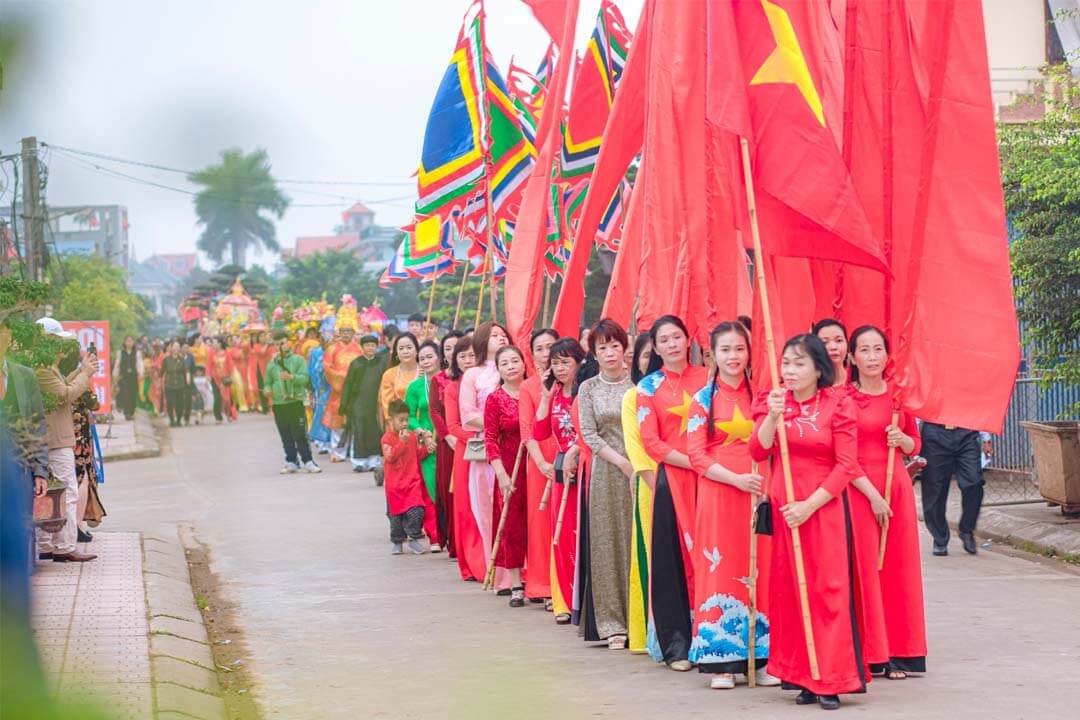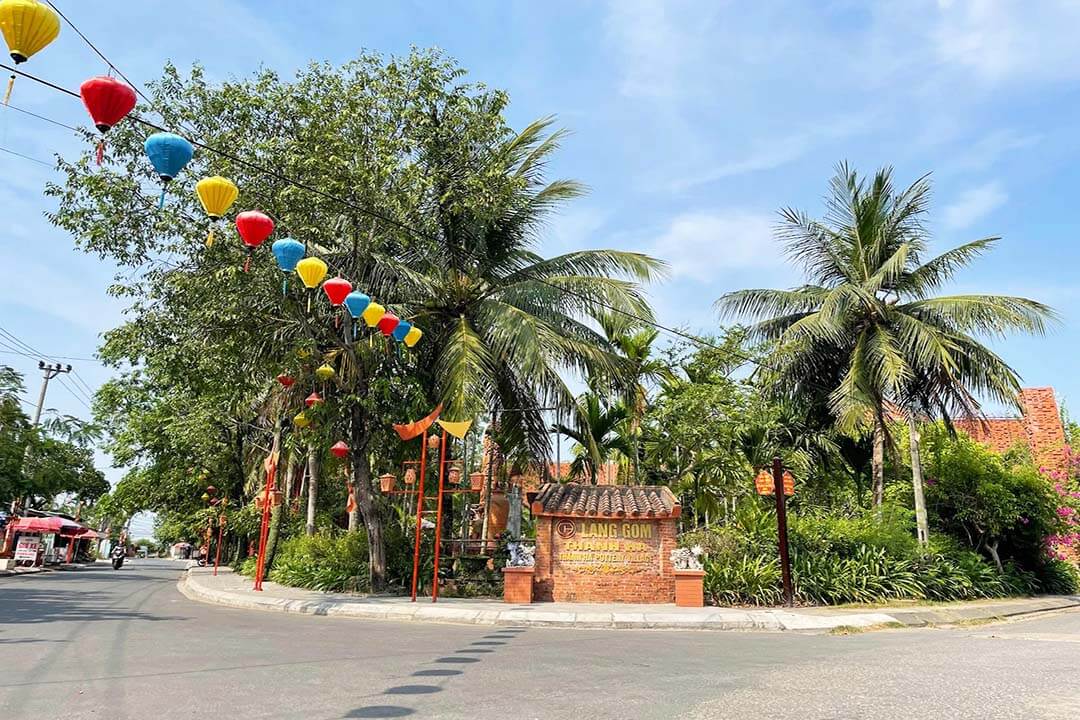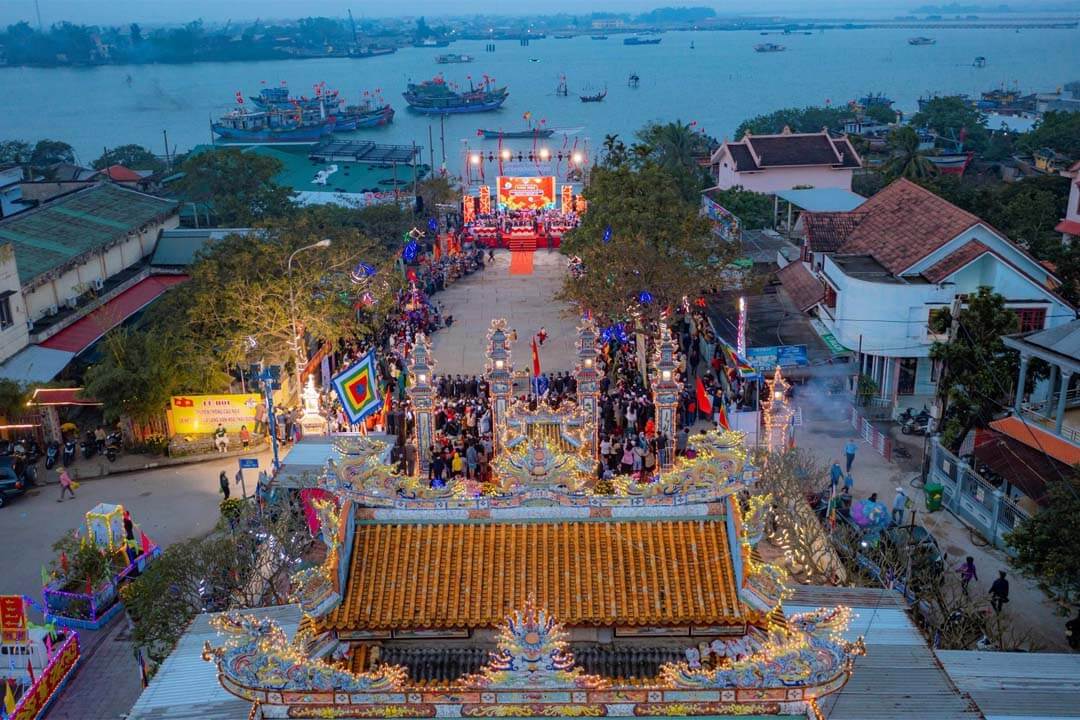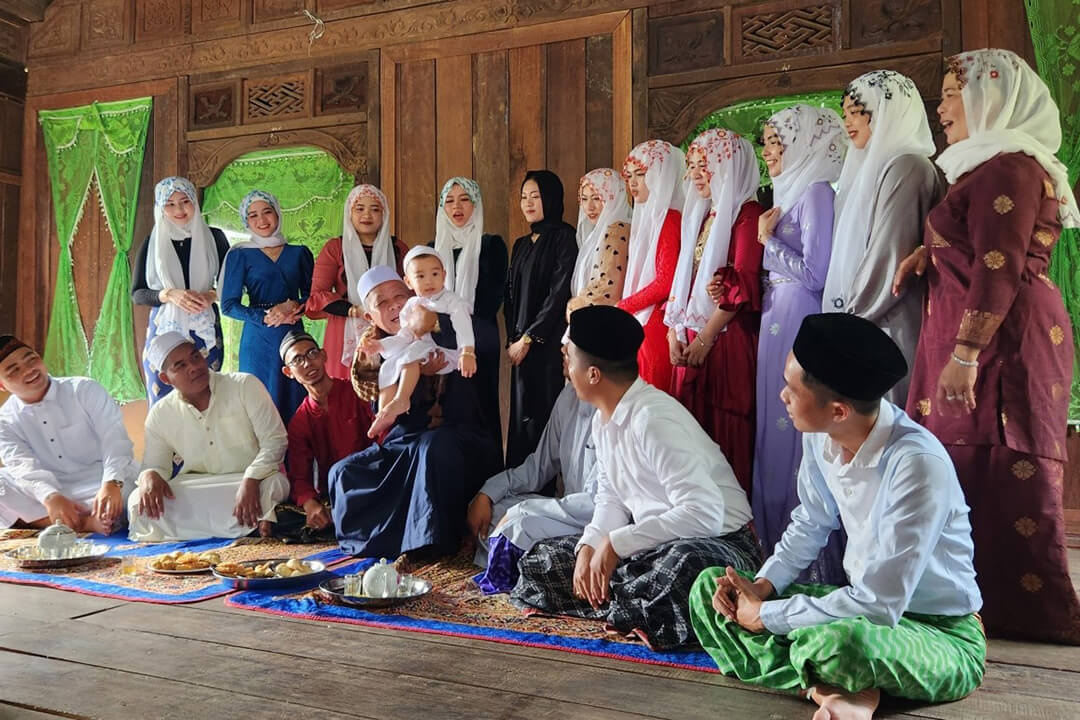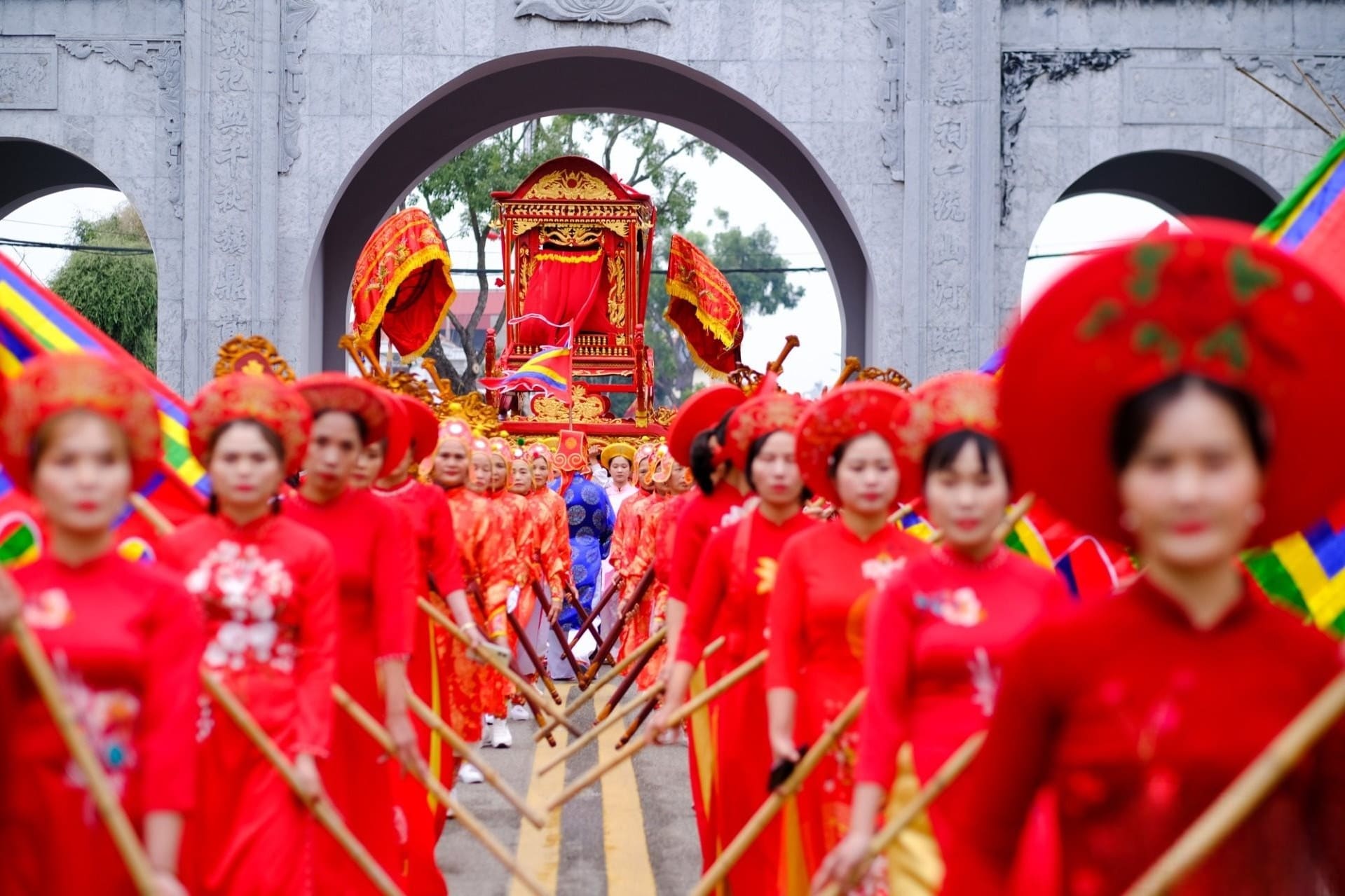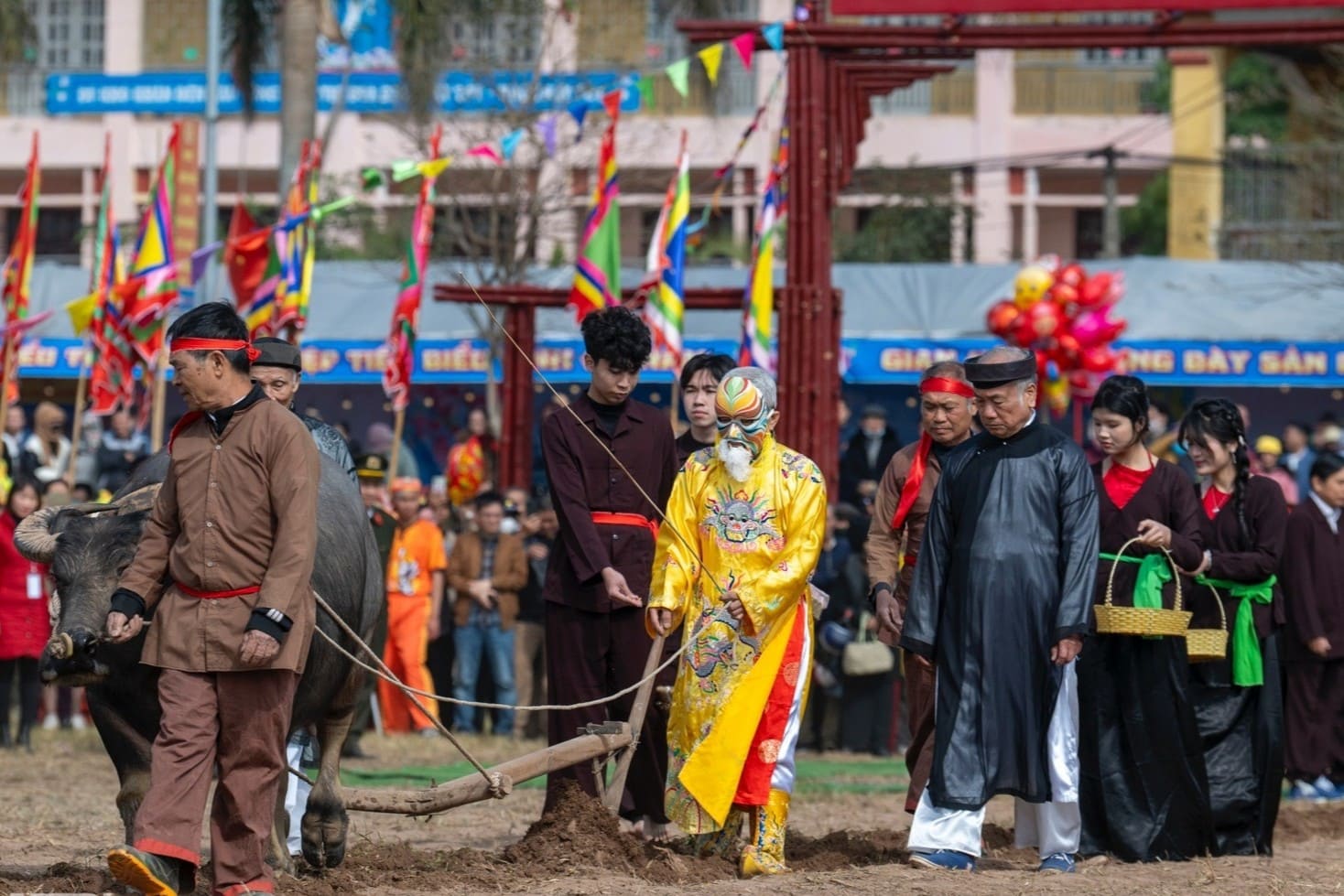Jul - 04 - 2025
Le Mat Village Festival is a major festival in Hanoi, preserving many unique cultural values through its rituals, water procession, and various forms of folk culture. Each year, this traditional festival attracts thousands of visitors who come to experience its vibrant culture and legendary heritage.Le Mat Village Festival is a major festival in Hanoi, preserving many unique cultural values through its rituals, water procession, and various forms of folk culture. Each year, this traditional festival attracts thousands of visitors who come to experience its vibrant culture and legendary heritage.
An overview of Le Mat Village Festival
Le Mat Village Festival is held annually at Le Mat Communal House, Long Bien Ward, Hanoi.
Origin and historical background of the Festival
The Le Mat Village Festival originated during the Ly Dynasty, specifically under the reign of King Ly Thai Tong (1028 - 1054). According to local folklore, this area was formerly known as Tru Mat and was renowned for its snake-catching and snake-raising traditions. The festival was established to honor a man surnamed Hoang, who played a significant role in land reclamation and protecting the villagers. After receiving a reward from the king, he declined gold and riches, instead requesting to lead his people across the Nhi Ha River to reclaim land in the western part of Thang Long Citadel. This effort resulted in the formation of thirteen hamlets known as the “Thap Tam Trai”. Moved by his selflessness and dedication, the villagers revered him as their village tutelary god and chose the 23rd day of the third lunar month each year to hold a festival in his memory.
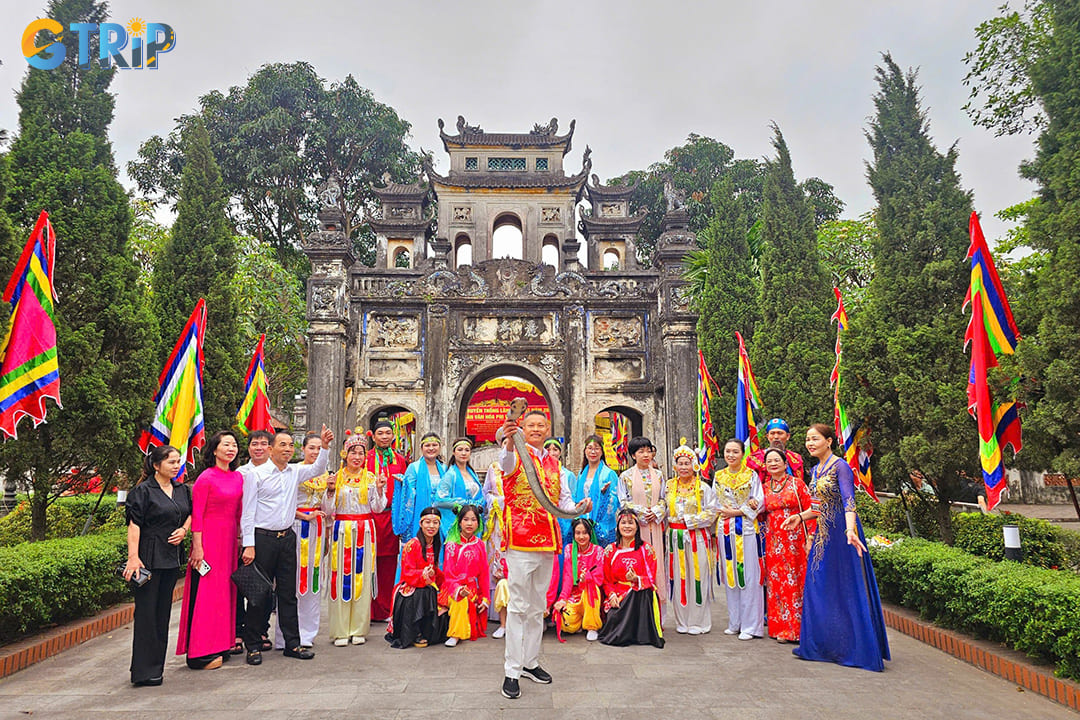
Le Mat Village Festival took place in a vibrant atmosphere and attracted a large number of participants
Cultural meaning of Le Mat Village Festival
The Le Mat Village Festival carries many profound meanings. It is an occasion to honor the hero who contributed to land reclamation, helped people settle and build their livelihoods, and protected the community. The festival reflects the spirit of "remembering the source when drinking water," a core value in Vietnamese traditional culture. It also helps strengthen community bonds between the original villagers (Cuu Quan) and the Thap Tam Trai settlers (Kinh Quan). In addition, the festival helps preserve and promote unique cultural values such as traditional folk dances, water - fetching rituals, the Đa Ngu (fish-striking) ceremony, and traditional offerings. It also highlights the craft of snake farming - a distinctive occupation that has made Le Mat Village famous.
Remarkable rituals of Le Mat Village Festival
Le Mat Village Festival consists of three main parts: the water procession along with the "Da Ngu" ceremony, the performance of the "Giao Long", and the procession of “Thap Tam Trai”. These events blend spiritual reverence, legendary reenactment, and community solidarity, reflecting the village’s unique cultural and historical identity.
1. The opening day of this festival
As a traditional custom, the Le Mat Festival officially begins with three drum and gong beats. The opening ritual is always conducted by the Tu Van (Scholars’ Association), followed by ceremonial offerings from the village’s 19 clans. April 21 (lunar calendar) is considered the day for family clan rituals, during which each clan prepares offerings and contributes to the festival expenses.
In addition, the villagers hold the “Te Nhap Tich” (Entry Ceremony), often referred to as the day of “opening the festival” or “opening the procession,” starting with the water-fetching ritual. This ritual not only symbolizes the prayer for water but also conveys deeper meanings—water purifies the soul and represents an infinite source of strength.
Following the water-fetching ceremony is the "Van" (classical text) procession, another ancient ritual. In the past, the village would only organize it once every three to five years. Nowadays, with better resources, the villagers hold the ritual annually by preparing a newly copied ceremonial text for the procession.
2. The fish striking ceremony (Da Ngu ceremony)
The ritual of catching fish for the deity (Da Ngu) in the Le Mat Village festival is typically held on the 22nd day of the third lunar month at the Jade Well (village shrine well). This ceremony reenacts the legend of a young man who sacrificed himself to defeat a water monster and retrieve the body of a drowned princess. The Da Ngu ceremony serves as a spiritual performance. Villagers express their prayers and gratitude to the princess for her blessings upon the community.
Starting from the 21st day of the third lunar month, villagers are not allowed to approach the Jade Well. They are also prohibited from drawing water because the well is in preparation for the Da Ngu ceremony the following day. On the 22nd day, twelve young men from the village perform rituals at the shrine before boarding boats to commence the fishing ceremony. The fish caught during this event are placed on a ceremonial tray at the main altar of the shrine as an offering to the deity.
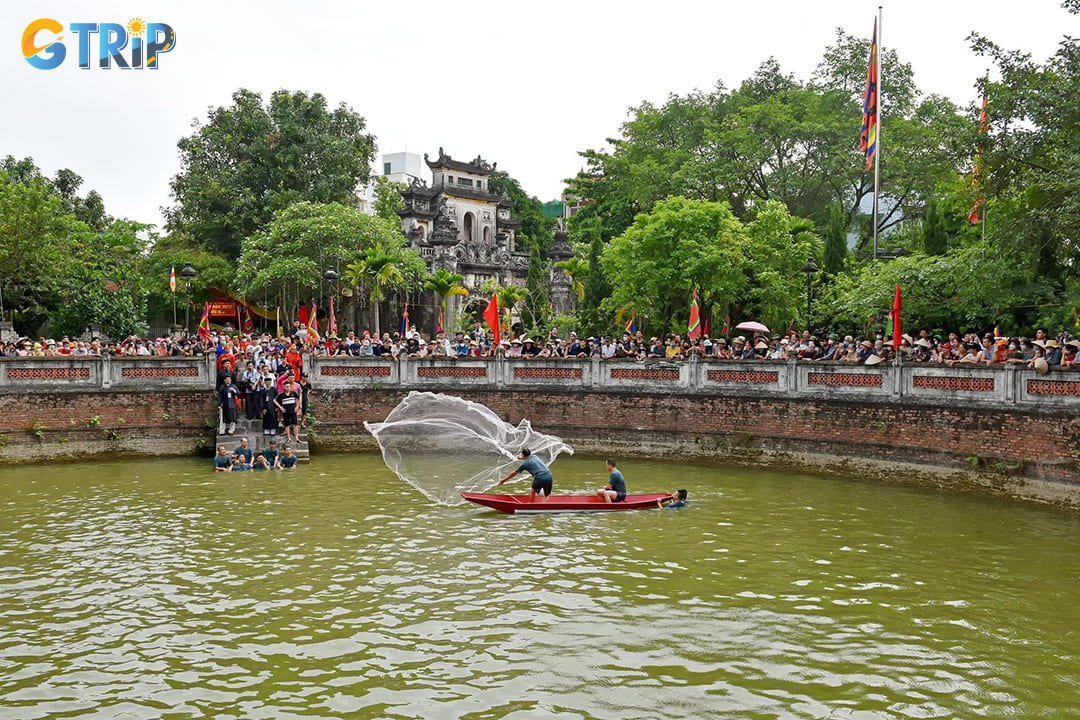
The Da Ngu ceremony is a spiritual performance that attracts many locals
3. The performance of the Giao Long
The snake dance is the most prominent activity of the Le Mat Village Festival, held on the main festival day, the 23rd day of the third lunar month. The performance reenacts the legend of Prince Hoang slaying a water monster to rescue a princess. A giant snake, about 10 to 15 meters long, made of bamboo, fabric, and colored paint, is skillfully operated by strong young men. They perform flexible, sinuous movements in rhythm with the intense beat of drums and gongs. The person playing Prince Hoang wields a sword and fights the snake in a heroic and dramatic scene. The snake dance symbolizes courage and holds deep spiritual significance for the people of Le Mat. The Giao Long dance of the Le Mat Festival has been recognized as one of the seven traditional dances of Hanoi.
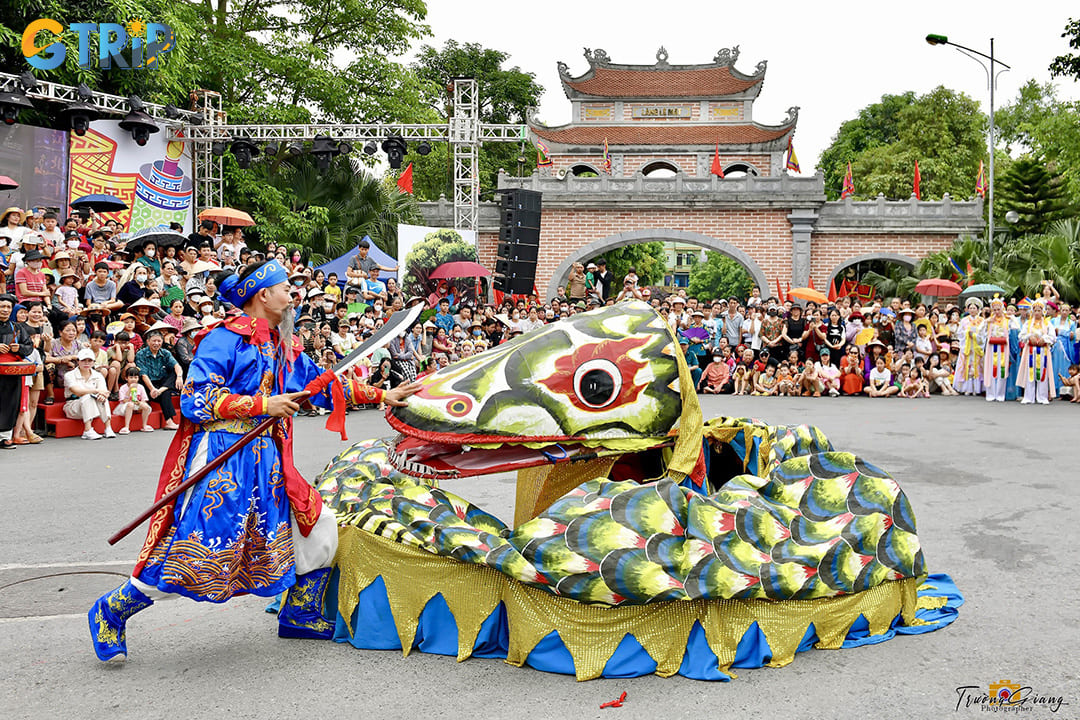
The performance of young Hoang slaying Giao Long is always eagerly awaited by locals each year
4. The procession of the Thap Tam Trai
The Procession of the Thap Tam Trai is a traditional ritual honoring Prince Hoang’s contributions to land reclamation and village founding. On the festival day, representatives from 13 ancient hamlets, now part of Hanoi’s inner districts, return to Le Mat with offerings, colorful flags, parasols, and a solemn procession. The procession parades through the village and enters the communal house to present offerings and perform rituals. Each group wears traditional ceremonial attire, accompanied by drums, folk instruments, and sometimes lion dances, creating an atmosphere that is both solemn and festive. This ritual reflects unity and connection among communities that share common ancestral roots.
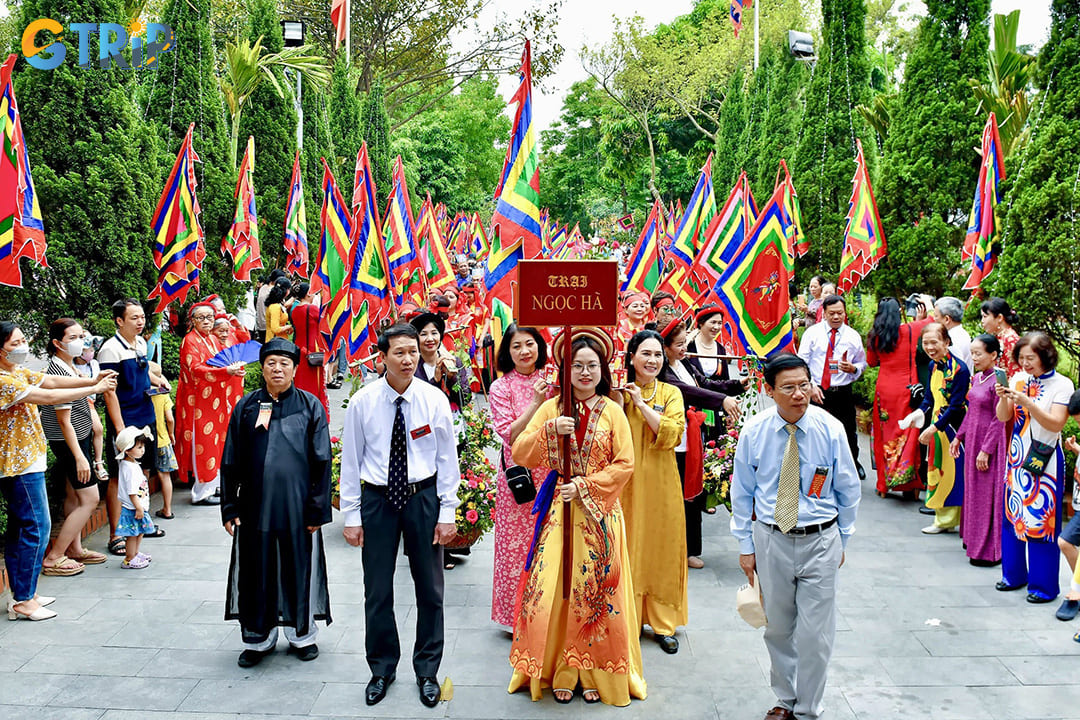
The Thap Tam Trai procession honors Prince Hoang and symbolizes unity among 13 ancestral hamlets through offerings and traditional performances
5. Additional activities
In addition to the main rituals such as the Giao Long snake dance, the Thap Tam Trai procession, and the Da Ngu ceremony, the Le Mat Village Festival features various lively activities. These include folk performances, traditional games like tug of war, duck catching, and snake-catching contests, as well as a village craft fair. The food area attracts many visitors with local specialties made from snake, such as snake porridge, snake spring rolls, and snake wine. The festival is a time to honor ancestors and an opportunity to promote the local culture and the traditional craft village.
Each year, Hanoi’s festive season is brightened by traditional colors and customs. Among them, the Le Mat Village Festival stands out with legendary rituals, folk games, and unique cuisine. Attracting both locals and tourists, it offers a one-of-a-kind experience of Vietnamese culture and spirituality. Plan your Vietnam trip now to explore this vibrant festival in Long Bien District, Hanoi.

